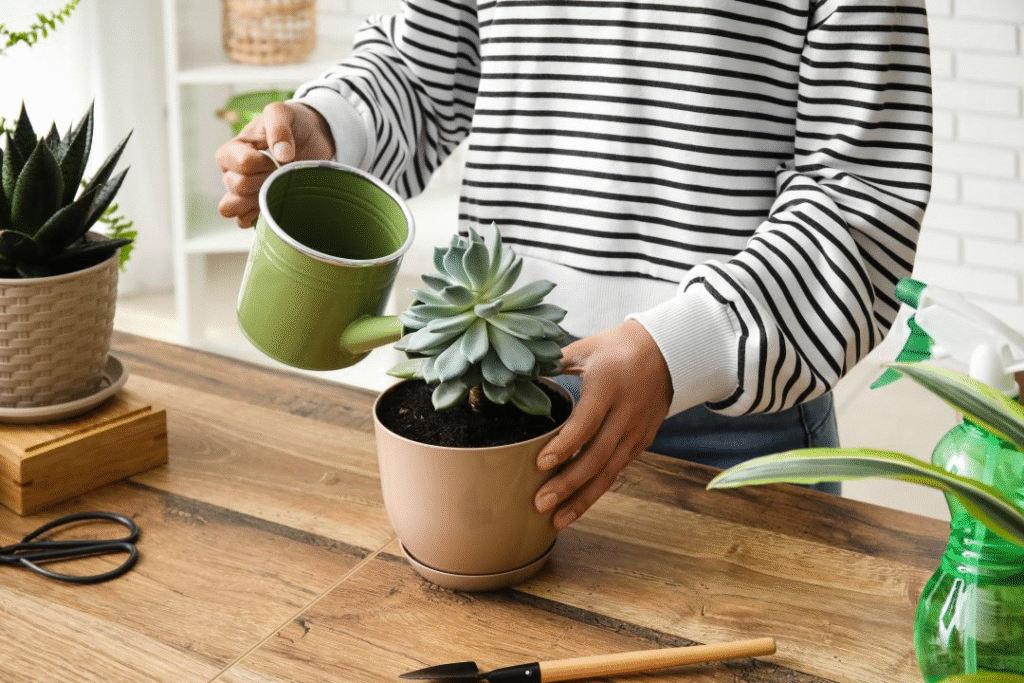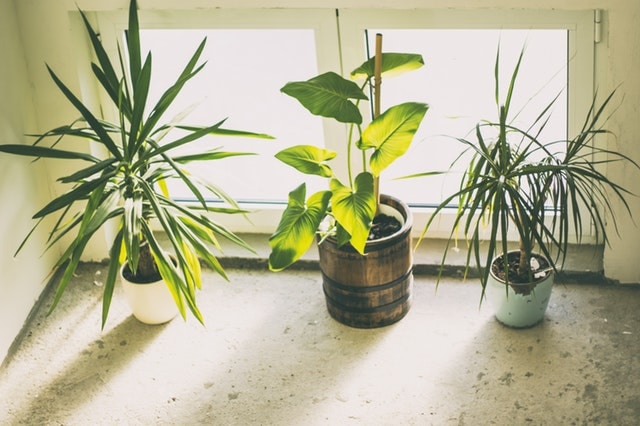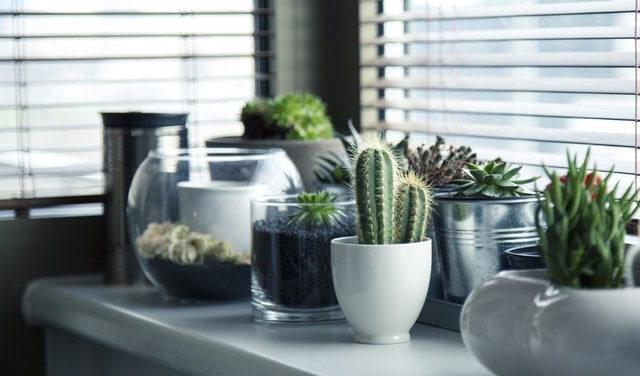Last Updated on 4 months ago by Namrata
Are you one of those people who is deeply fascinated with succulent plants? Have you introduced a few of them in your garden space? But they are not blooming into a splendid foliage. What’s the reason? Are you flooding them with water, or is it because you don’t know the exact possible reason for how often you should water succulents? Well, don’t worry, as here is a detailed guide that will help answer all your queries and make you fall more in love with your succulents.
Water Succulent And The Craze Behind It
As we all know, most succulents are easy-to-grow houseplants. People love it due to their low maintenance. These are mainly desert plants. It doesn’t make much difference whether you plant in your garden or on your balcony. The reason is that they do not need enough water to survive, as they are natives to an arid climate. Studies as per the Journal of Environmental Management volume 379 suggest how succulent plants can resolve future energy demands and crises.

Not only that, but enough water is stored in their fleshy, hard leaves, and hence, they can grow anywhere. But this does not mean you shouldn’t water it often or overwater it. This can also be nearly dangerous for your succulent’s health. But the main thing is to know when to water your succulent plant and how often. It is really important to take good care of the succulent to survive and grow properly.
How Do You Determine The Correct Way To Water Succulents?
Have you seen how a camel residing in desert areas stores water? Succulents are similar to camels; they soak up water and store them. Due to this soak and dry method is recommended for watering them. This method involves watering the plants until excess water soaks out of the soil. Afterwards, when the soil dries then water it again. Because many people fail to do so. They either overwater, leading to roots roting or underwater, which makes the leaves wrinkle and fold.
How Often Should You Water Indoor Succulents and Keep Them Healthy?
When it is hot, i.e in summer, and when it’s humid in the Spring season, your succulent will require water every 10 to 14 days. All this is due to controlled temperatures indoors. Also, other factors that may affect the rapid growth of succulents are the light, air quality, heating apparatus and moisture requirements by the plants.
The water requirement will depend on different species of succulent plants. The watering weeks and days will solely depend on the type of succulent plant you have planted in your home pot. A quick trick to determine the amount of water required is as follows:

- Pluck a leaf of the succulent.
- Closely examine it.
- If you observe thick leaves, then the plant will require less water.
- Correspondingly, if the leaves are thin, then try watering more.
This is because thick leaves indicate immense moisture in them, while the thin leaves show very little to no moisture. Similarly, the watering also depends on the size of the plant. If the leaves are smaller, then the water requirement is higher, and vice versa.
During the winter months, the indoor succulents need very little water throughout the month. So you need to be careful about the amount of water you add to the succulent for its growth. During the dormant state, these succulents don’t need energy flow. So it is best to trust the ongoing process and let them do their thing.
Lastly, it is really important to consult your landscape expert to determine the correct conditions, timings and seasonal changes to water your succulent.
How To Water And Keep Your Outdoor Succulent Healthy?
Well, speaking of the outdoor succulents that are planted in your garden pots. Its watering condition depends on how often your region receives rainfall, and the season matters as well. Still, if you wish to provide water to plants growing in a desert-like arid climate, then do not forget to provide them with well-drained soil. This will ensure that the roots of the succulent plant don’t rot away.
There is a saying that goes like, “It is advisable to water the plants in the morning during the summer season.” This is because the soil dries up all day in hot sunlight. But it is not recommended to add water at night. As the soil is wet, there is no sun exposure, and the water sits there all night. This will make your succulents mushy, and hence they are prone to root rotting and the growth of infections and moulds on them.

When the conditions are extremely dry, water is applied when the leaf colour fades. When it rains heavily outside, make sure to water your succulent when you notice the ground is dry. Avoid constantly watering your plant like you water the normal ones, as it will kill the succulent plants.
Ways To Test The Best Time To Water The Succulent Plant
So here is a method I am pretty sure you are going to like. You just need to feel the soil with your hands. Then you need to just lift the container. In case the container is light, meaning all the soil has dried up, it’s time to water the succulent. Likewise, if the container feels heavy and bulky, that means the water hasn’t been retained by the soil, and it’s time to wait for a few days before watering.
Follow this easy thumb rule, which says that succulents need to be watered every week when they are young and small. Gardening expert Harry Bowdell has said the best way to find the watering time is to put an ice lolly stick inside the container. When you pull the lolly stick out after sometimes and it’s completely dry. Then it’s time for watering your succulent, and if the soil sticks to it, then wait for some time before watering.
One should also make sure to have a drainage hole to avoid the rotting of roots. As this condition becomes extremely difficult to treat in a succulent.
Now, coming to the winter and autumn seasons, the succulents become dormant and don’t react much. They are peacefully sleeping during these times of the year. Hence, it is not favourable to disturb them. This means you can go for 2 to 3 weeks without watering the plants. But still, it is recommended to do the soil test to avoid any complications and health risks.
Note: During the succulent plants growing phase phase provide it with balanced, nutritious liquid fertiliser. Use an effective amount of fertiliser around 1/4th and don’t forget to dilute it before use. If your fertilisers are dilute, then they must contain an equal amount of phosphorus, potassium, and nitrogen.
Various Ways To Water Succulents For Proper Care
- Submerging Technique:
This method involves soaking the plant and is as follows:
- The succulent must be placed in the sink.
- The sink is filled to the brim with water.
- The water must rise to the top of the container.
- Let the water stay for a few minutes.
- Then take the container out.
- Drain excess water from it.
Note: This method is best practised for small succulents.
- Top Watering:
This method is the same as we follow for the majority of the plants. It is done as follows:
- Add water from the top of the vessel.
- The water travels to the bottom of the container.
- Let it drain through the roots.
Note: One thing to keep in mind is to avoid wetting the foliage. Watering should be done around the base of the plant.
- Watering the Bottom:
One easy method of watering the succulents. The method is as follows:
- Keep the succulent in shallow water in a dish.
- Set it for around 10 minutes.
- Let all the water around be absorbed by the succulent.
- This process is done through the drain holes.
- Take the plant outside after some time.
- Let all the water drip from the drain holes.
- Put it back where it belongs.
How To Water Your Succulents With No Drainage Holes
In this case, when your succulent pots don’t have a proper drainage hole, try balancing wet and dry weight substrate and planters. After the water reaches its dry weight, refrain from overwatering. Make sure that the potting mixes remain soggy and moist from within. If pots or succulents are larger than the water at the soil line and not at ground level.
Best Water To Use For Watering Your Succulents
Well, talking of the best water, then rainwater is the first choice. This is because it arrives naturally. But if you are using alkaline water, then be mindful, as it will introduce a lot of minerals into the soil. Similarly, you can water your succulents with filtered and bottled water. If you are living in snowy regions, then melt some snow and use it to water your succulents. As it is similar to rainwater.
Signs That Suggest Your Succulent Is Being Underwatered
Look for signs that say the following:
- Leaves turn brown.
- Wrinkles appear on the leaves.
- Leaves tend to fall from the plants.
- Potting mix and soil are dry when you touch them.
- Leaves look flaccid and floppy.
- They began to decolourise.
Signs That Suggest Your Succulent Is Being Overwatered
Look for signs that say the following:
- Roots tend to die.
- They suffocate due to excess water.
- Stems get mushy and soft.
- Plants tend to change their colour.
Factors That Affect How Often You Should Water Succulents
1. Size of the Container:
If you have planted your water succulent indoors, then the size of the containers matters. It is very crucial to understand that large containers can hold more soil. Hence, the water requirement will be very low. On the contrary, if you grow your succulent in small containers, then there is very little need for water. Due to this, the soil dries faster, whereas in large containers, the soil holds more amount of moisture.
2. Humidity:
Understand that a water succulent planted in dry, hot climate conditions will need more water for its survival. Hence, water it daily. Those that are planted in cold climate areas need less water. You can water it once or twice a week.
3. Season Type:
Summer Season: Many succulents grow enormously and rapidly, especially during the summer season. Watering the plants daily during this season is necessary for their healthy growth. Secondly, depending on conditions like temperature and climate changes, make sure to water every two weeks.
Winter and Spring Season: Conversely, in the winter and spring season, the growth of succulents remains dormant. So it is advised to water it once every three weeks in spring and once a week in the winter season. Avoid watering them or use less water from November to March, as the climate is cold, and your succulents may die due to overwatering.
4. Light:
If your succulents are kept indoors, they will require minimal water for their growth. Whereas the ones that are planted outside in your garden area will need more water for their survival. This is because they are exposed to sunlight for more than 10 hours a day. Experts say that if succulents are kept in shade for too long, they find it difficult to grow. Not only that, but the stem kind of looks dull with bright green coloured pigmentation on it.
Tip: Do not touch the leaves of the succulent too often, as the wax coating on the leaves will wear off. If the farina worms off, then the succulent will fail to protect itself from direct sunlight.
5. Size of the Succulent:
If succulents are larger, then they will require more water. So the succulents can survive for 14 days or more without water. But if they are medium-sized ones, then it is said to be water after a week.
6. Type of Container:
The type of container also affects the watering schedule of the succulent. For example, it is advised to avoid using ceramic pots because they don’t dry up, and moisture is retained for a long time in them. Go for clay pots as they are quite breathable and porous. It will allow and soak all the moisture due to its porous clay coating.
7. Temperature:
Temperature plays a crucial role in determining the water timings. If the temperature is hot, around 90 degrees Fahrenheit, then succulents will require watering frequently. This is because their leaves cannot sustain extreme heat. They tend to dry faster. On the contrary, temperature plays a minor role for indoor succulents or those in shady areas of the house. This is because they can go without water for a longer duration.
8. Various types of Succulents:
Various species of succulents require different levels of watering schedules. If you are creating your plant from the roots, then it will need enough moisture to grow. So watering it daily is recommended until it builds a solid foundation with the soil. Continue doing this until enough leaves have grown out of the plantation. Remember that the soft leafy ones require more moisture than the hard-looking kinds.
Conclusion
Cultivating thriving succulents boils down to understanding their unique “soak and dry” preference. By keenly observing your plant’s leaves, feeling the soil, and considering factors like climate, container type, and season, you’ll master the art of succulent watering, ensuring they flourish beautifully in your space.
MORE POSTS: Best Indoor and Outdoor Succulents for Beginners



